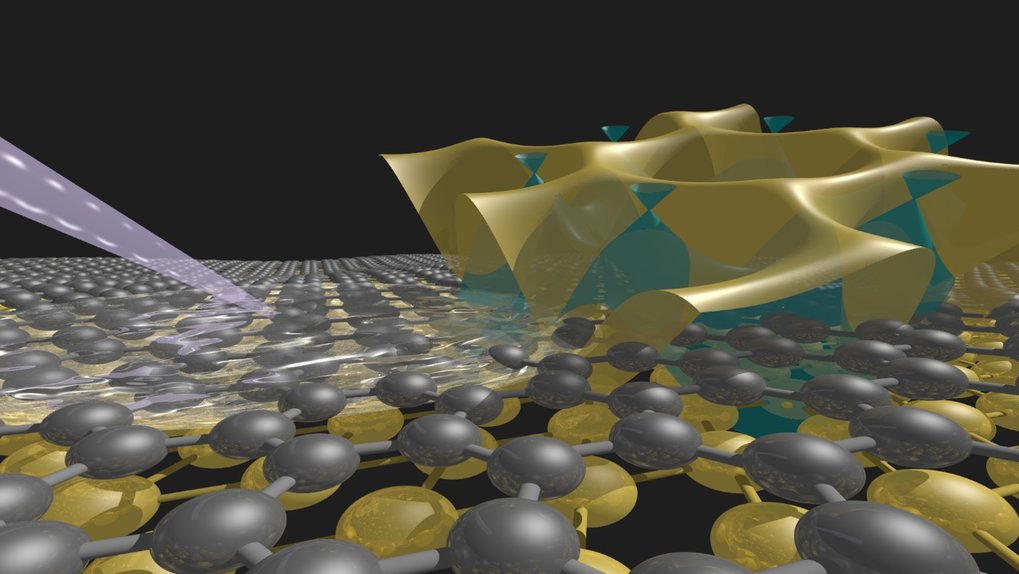
Group members:
Naidyuk Yu. G., Corresponding Member of NAS of Ukraine
Kvitnitskaya О.E., Senior Researcher
Bashlakov D.L., Senior Researcher
Tiutrina L.V., Junior Researcher
Main areas of research
● Investigation of modern superconductors — rare-earth nickelborocarbides, magnesium diboride, high-temperature and iron-based superconductors, superconducting topological materias by Andreev reflection spectroscopy.
● Investigation of coexistence of superconductivity, magnetic ordering and spin/charge density waves in new high-temperature superconducting compounds.
Equipment
The point-contact spectrometers for investigation of non-linear conductivity of point contacts. The spectrometers have a cryogenic equipment for creation of point contacts and measuring of conducting properties of point contacts in temperature interval 1.5-77 K and magnetic field 0-9T.
Important results in recent years
• The phenomena of Andreev reflection in point contacts with ordinary metals analyzed which can help and be useful during the study of more complex materials [1].
• It is shown the emergence of a new mesoscopic superconductivity on the MoTe2 surface with a critical temperature up to 5 K, which significantly exceeds the bulk Tc=0.1 K. The dV/dI spectra of MoTe2 heterocontacts with Ag or Cu show the characteristics of Andreev reflection. The average values of the superconducting gap are 2Δ=1.30 ± 0.15 meV with a ratio of 2Δ/kBTc =3.7 ± 0.4, which is slightly higher than the standard BCS value of 3.52. The temperature dependence of the superconducting gap has a behavior similar to BCS, which indicates a nodeless order parameter with some strong-coupling renormalization. Observations of the "gapless" single minimum in dV/dI "soft" PCs may indicate the topological superconducting state of the MoTe2 surface, as these contacts investigate mainly the interface and avoid the additional pressure effect [2].
• Using point-contact spectroscopy of Andreev reflection, the iron-containing superconductor FeSe was investigated when cooled down to 0.5 K. The point-contact spectra of Andreev reflection were analyzed in a two-band model. As a result, the presence of two anisotropic superconducting gaps in FeSe was established and their BCS-like temperature dependences were obtained. The contribution of each gap is determined and the anisotropy parameter is calculated [3].
• In point contacts created on the basis of iron-containing superconductors AFe2As2 (A = K, Cs, Rb), a noticeable multiple increase (up to 10 K) of the superconducting critical temperature Tc was observed. The reasons for this increase of Tc in point contacts may be related to changes in the density of charge carriers at the interface and / or uniaxial inhomogeneous pressure that occurs when making contact [4].
• Superconductivity in strongly p-doped Ge was observed by measuring the differential resistance dV/dI (V) of Ge – PtIr point contacts with a critical temperature Tc = 6K. The dV/dI(V) spectra with characteristics similar to the features of the Andreev reflection were fitted within the the single-band Blonder–Tinkham – Klapwijk model. The obtained temperature dependence of the superconducting gap shows a BCS-like behavior with a ratio of 2Δ / kBTc=10.5±0.5, which is much higher than for conventional superconductors. The magnetic field severely suppresses the Andrew reflection, but the superconducting gap itself decreases moderately in the magnetic field, as previously observed for type II superconductors, including nickel borocarbide and iron-based superconductors. No superconductivity was detected in n-doped Ge with a similar dopant concentration [5].
Important publications of the group (2018 – 2022 years)
1. Anatomy of point-contact Andreev reflection spectroscopy from the experimental point of view / Yu. G. Naidyuk, K. Gloos // Low Temperature Physics.- 2018.-V. 44, P. 257.
DOI: https://doi.org/10.1063/1.5030447
2. Surface superconductivity in the Weyl semimetal MoTe2 detected by point contact spectroscopy // Yu.G. Naidyuk, O.E. Kvitnitskaya, D.L. Bashlakov, S. Aswartham, I. Morozov, I. Chernyavskii, G. Fuchs, S.-L. Drechsler, R. Hühne, K. Nielsch, B. Büchner, D. Efremov // 2D Materials.- 2018.-V. 5, P. 045014 (1-8).
DOI: https://doi.org/10.1088/2053-1583/aad3e2
3. Sub-kelvin Andreev reflection spectroscopy of superconducting gaps in FeSe / D.L. Bashlakov, N.V. Gamayunova, L.V. Tyutrina, J. Kačmarčik, P. Szabó, P. Samuely, and Yu.G. Naidyuk // Low Temperature Physics.- 2019.-V. 45, P. 1222.
DOI: https://doi.org/10.1063/10.0000133
4. Enhanced critical temperatures in the strongly overdoped iron-based superconductors AFe2As2 (A = K, Cs, Rb) observed by point contacts / Yu.G. Naidyuk, O.E. Kvitnitskaya, D.V. Efremov, S.-L. Drechsler // Low Temperature Physics.- 2020.-V. 46, P. 1070 (1-3).
DOI: https://doi.org/10.1063/10.0002149
5. Superconductivity in hole-doped germanium point contacts / N. V. Gamayunova, M. Kuzmiak, P. Szabó, P. Samuely, Yu. G. Naidyuk // Low Temperature Physics.- 2022.-V. 48, P. 136.
Contacts
47 Nauky Ave., Kharkiv, 61103, Ukraine
e-mail: terekhov@ilt.kharkov.ua
tel.: +380(99)764-2075
© 2025, Design by Anton Klimkin, Andrii TEREKHOV
Executive editor: Andrii TEREKHOV
